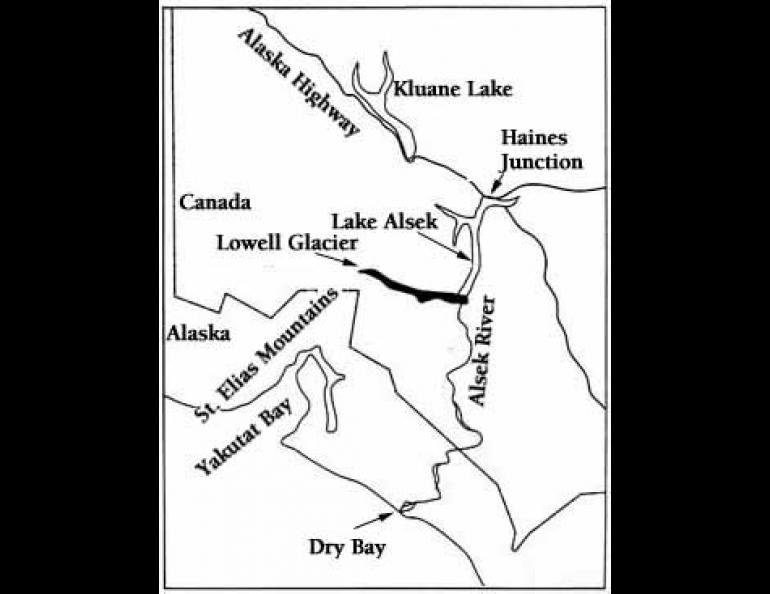
The Southeast Flood of 1850
There has been much in the news this past season about the plight of seals and porpoises in Russell Fiord owing to the closure of its outlet to the sea by Hubbard Glacier. A similar, but much more profound glacial-damming episode occurred just to the northeast of Russell Fiord over a hundred years ago.
Oscar J. Noel of Fairbanks recently brought to my attention that, as late as 1850, a section of what is now the Alaska Highway southeast of Kluane Lake was under water due to glacial damming. He states: "What first attracted my interest to this phenomenon were the old beach lines seen on the left when driving into Haines Junction from Whitehorse." Oscar also enclosed some literature from the Kluane Park headquarters describing what happened 200 years ago.
Geologists reckon that around the year 1725, Lowell Glacier, 40 miles south of Haines Junction, crossed the valley of the Alsek River and blocked the river's drainage to the Gulf of Alaska. Water was impounded behind the glacier for 125 years and, according to Native stories and geological evidence, it formed a great lake extending over 50 miles upstream.
Around 1850, when the ice dam finally broke, a massive flood swept down the valley of the lower Alsek and out to sea at Dry Bay. The Kluane Park brochure contains an excerpt from a book by anthropologist F. de Laguna describing the episode as viewed by a member of the Yakutat Tlingit. The narrator is the granddaughter of a woman who was 10 years old at the time of the incident:
"Then one time, you know, when my father's mother was a little girl up at Tinx Kayani . . . there was a flood all over. It was because my father's people made fun of a seagull. They threw it in the fire. It was a young one and couldn't fly. They threw it in again. All its feathers burned off. They laughed at it."And then a great flood came, and there was no place to be safe. That glacier broke that used to go across the Alsek. The people tied their canoes to . . . the island [that used to be] at the mouth of Dry Bay. . . . But some of the young people untied their canoes too soon. A great wave came along, and turned over the boats, and the young people were all flooded into the ocean. Only the old people were saved.
"It was when my father's mother was a little girl . . . . Her uncles got drowned that time. When she talked about it directly, my grandma always cried. They lose lots of people that time."
It is estimated that Lake Alsek drained in two to three days, creating an outrush of water that was equivalent to the Amazon, the mightiest river in the world.





